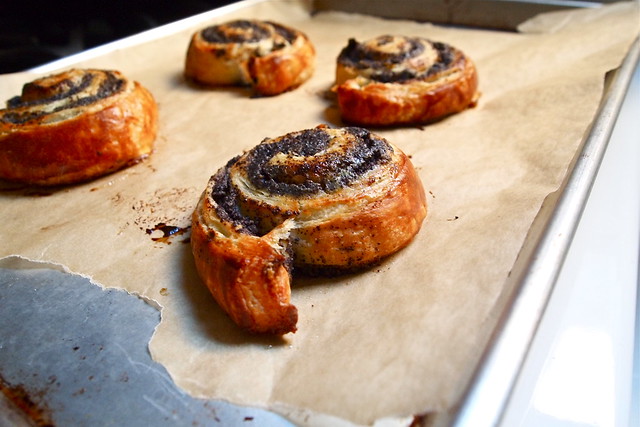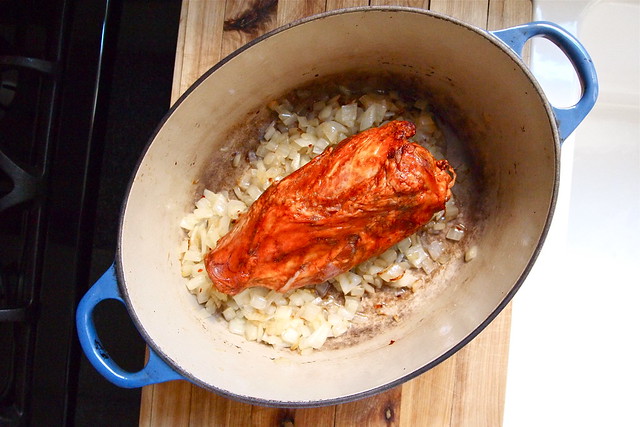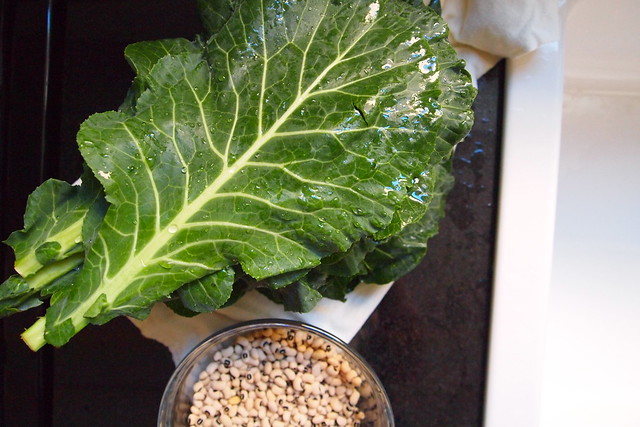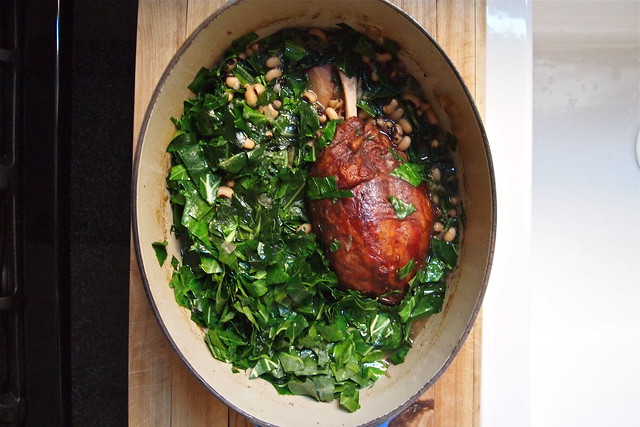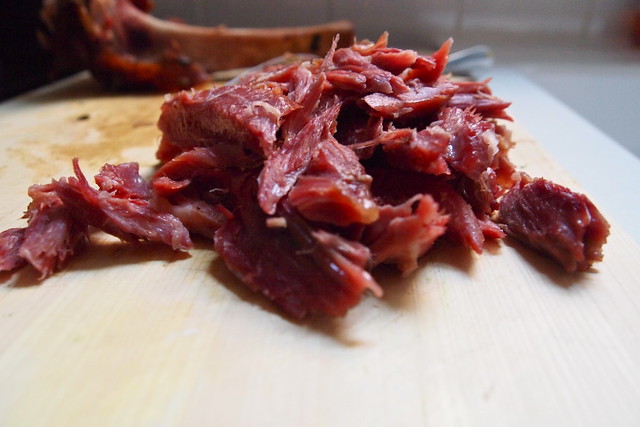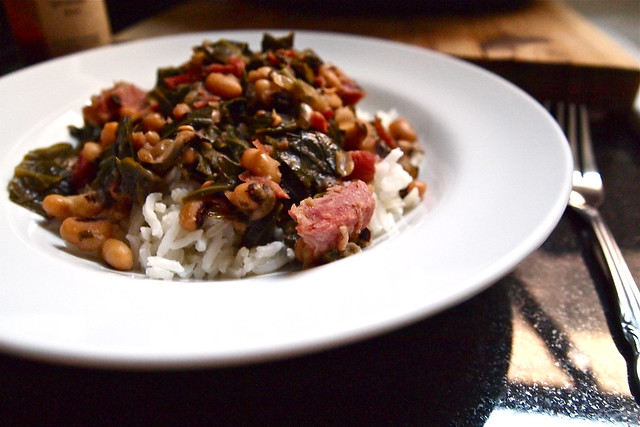When Octavian and I were in Berlin last summer, we were more or less on two different trips. He was there for a workshop and so was limited most days to a view of the city from a hotel conference room. I, however, was only tagging along and so had the luxury of spending my days wandering the winding streets, drinking in everything. There was a lot to the trip, then, that Octavian only ever saw in photos, heard about. And, unsurprisingly, there were spaces, moments, flavours, that were pretty well impossible to capture or convey, that he would've had to have just been there for.
One of those things was a pastry I had at Brot und Butter, a buttery, delicate swirl of a pastry filled with poppy seeds. I ordered it pretty much at random. It was one of my first days in Berlin, and I had been walking all afternoon, paper map in hand, and had already had a few awkward I'm-sorry-my-German-is-awful-sprechen-Sie-Englisch? moments that day. So by the time I'd found my way to the cafe, I was tired and couldn't quite find the courage to speak up and order something. (I also couldn't figure out whether I was supposed to order from the counter or just take a seat.) So instead I just stood there, looking at the pastries in the cases, then at the rows of canned and boxed goods, indecisive about what to do and on the verge of just fleeing the situation. Apparently, I looked pathetic and stricken enough that about ten minutes in one of the women behind the counter asked me if I needed help. So I fumbled my way through another conversation, pointed at one of the poppy seed pastries, and was relieved just to be able to sit down with something, anything, and not feel so much like the silly North American that I was. It helped that the pastry was good, very good. For a few moments, anyway, I forgot the awkward exchange, lost between flakey, poppy-filled bites.
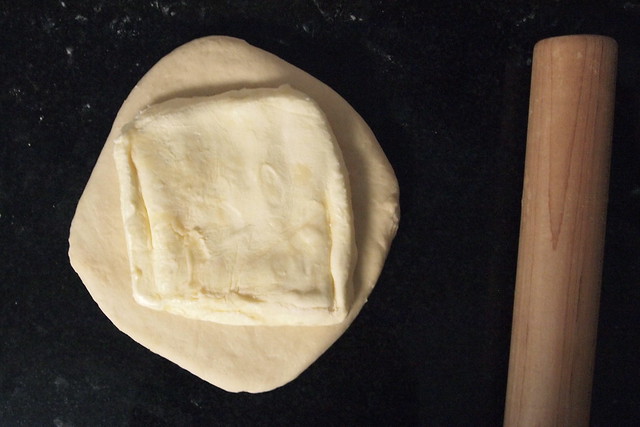
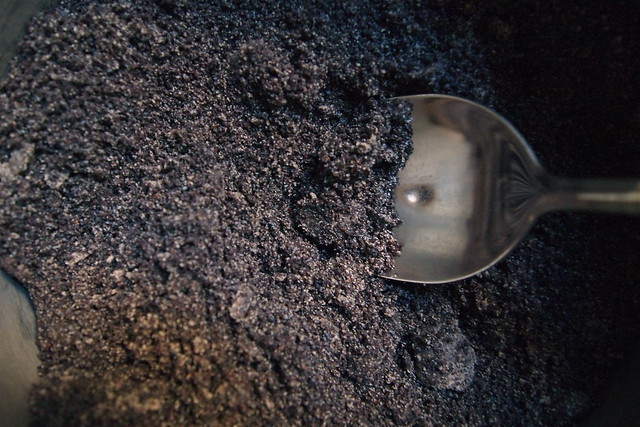

I knew as I ate that this pastry wasn't one that I'd be content just to remember. I needed to be able to make more just like it at home, long after this trip was over. But given all the awkwardness that had just transpired, I wasn't about to start asking questions about pastry methods and ingredients. So I settled for scribbling down its name from the pastry case--Mohnschnecken--and retreated.
This brings us to this past week, when I finally accepted that I would have to pull together a laminated yeasted dough if I wanted more Mohnschnecken.* Now, just what a Schnecke is seems to depend on who you ask. Some recipes have you add sour cream to the dough, some have you make letter-folds with it for flakier layers, some have you laminate in the butter for even flakier layers still. Most agree that the dough should be rolled up with its filling and cut into spirals--hence the name Schnecke, which just means snail in German. But because I remembered flakiness above all, I decided I would have to make a laminated dough--beat cold butter into a pliable slab, tuck it into a yeasted dough, and letter-fold it for layer upon layer of flakey pastry. But honestly, the prospect of working with a laminated dough again scared me. I'd only done it once before, and as I knew, it could get messy. You need to work quickly, so that the dough and butter don't get too soft to work with. But you also need to be gentle. If there isn't enough flour on the counter and the dough sticks and tears, the butter will start seeping out, and you might not get those perfect flakey layers. (I don't want to overstate the difficulty of working with laminated dough, but it's definitely something that I'm still working to get better at.) So it took me a few days to work up the courage. Then I dove in.
And it wasn't all that bad. I had a bit of trouble towards the beginning getting the butter the right consistency, and there were a few minor tears in the dough, which I tried my best to pinch together and then forget, but that was it. By early the next afternoon, we were tucking into our first pastries, puffed, golden, still warm from the oven, and ever so flakey. Totally, totally, worth the trouble, awkwardness and all.
Oh, and for those of you unfamiliar with poppy seed fillings--well, I just think we ought to see more of them around here. Poppy seeds have a pleasant bittersweet quality to them, which I think lends itself particularly well to pastry. I saw poppy-seed-filled pastries everywhere in Berlin and poppy seed ice cream too. The Berlinners have the right idea.
Oh, and for those of you unfamiliar with poppy seed fillings--well, I just think we ought to see more of them around here. Poppy seeds have a pleasant bittersweet quality to them, which I think lends itself particularly well to pastry. I saw poppy-seed-filled pastries everywhere in Berlin and poppy seed ice cream too. The Berlinners have the right idea.

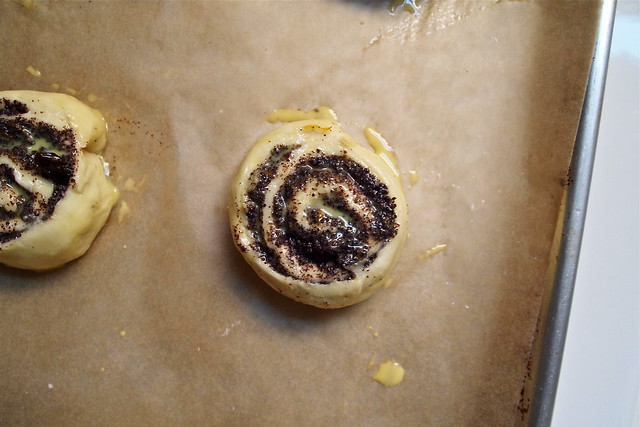
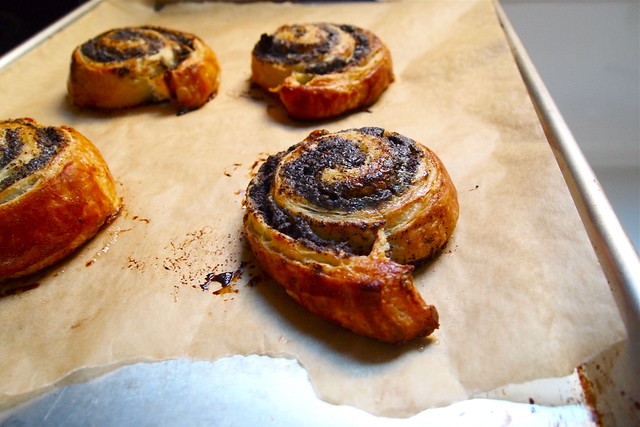
Much of my success with the Schnecken, I think, owe to the step-by-step photos that Joe, the man behind the pastry recipe, took the trouble to take. You can find his instructions for pulling together the pastry dough here, his instructions for laminating (especially helpful!) here, and his instructions for shaping here. I am actually looking forward to my next encounter with a laminated dough. These particular Schnecken, by the way, are a marriage of two recipes. The poppy seed filling comes from a New York Times recipe for hamantaschen via Smitten Kitchen.
Poppy Seed Snails (Mohnschnecken)
From Joe Pastry and Smitten Kitchen
Note: About freezing. I have to say that in my experience, pastries that have been frozen and then thawed, proofed, and baked are never quite as good as ones baked fresh. They just never have quite the same airy crumb. But these Schnecken held up pretty well. I'm probably just being overly picky in saying that they're not quite, quite as good. About the raisins. The next time I make this poppy seed filling, I might consider giving the raisins a rough chop before adding them in. This filling is about the poppy seeds after all!
1 batch pastry dough, chilled for at least an hour (recipe here)
1 batch poppy seed filling, chilled completely (recipe here)
2 egg yolks lightly beaten with a splash of milk or cream
Roll out the pastry dough into a rectangle (the exact dimensions don't really matter--I'd aim for it to be at least twice as wide as it is long) just shy of a quarter-inch thick, dusting the work surface, the dough, and the rolling pin with flour as necessary. Gently spread the poppy seed filling in a thin, even layer over the dough, leaving a half-inch border at the sides and bottom of the rectangle. (You might not need all the filling.) Starting from the top of the rectangle, roll the dough up into a cylinder about 1-1/2 to 2 inches in diameter. Trim the ends and then cut the dough into 1-1/4 inch pieces with a bench scraper or a sharp knife.
Place on a baking sheet lined with parchment paper, six to a sheet, and cover to proof until soft and airy, about 2 hours. (At this stage--before the final proof--you can also put them in the fridge overnight and then proof them the next day or store them in the freezer for up to three months. Just be sure to thaw frozen pastries overnight in the fridge before proofing and baking. From the fridge, the pastries may need an extra hour to proof.) Then brush with the egg wash and bake in an oven heated to 375 degrees F until golden, about 15 minutes.
Makes about 12 pastries.
*It occurs to me now that the Mohnschnecke I had in Berlin might not have been made with a laminated dough. Looking back at my notes from the trip, my guess is that that pastry was made with a sour cream dough, which made it crisper and less croissant-like. But hey, I'm not going to complain.

